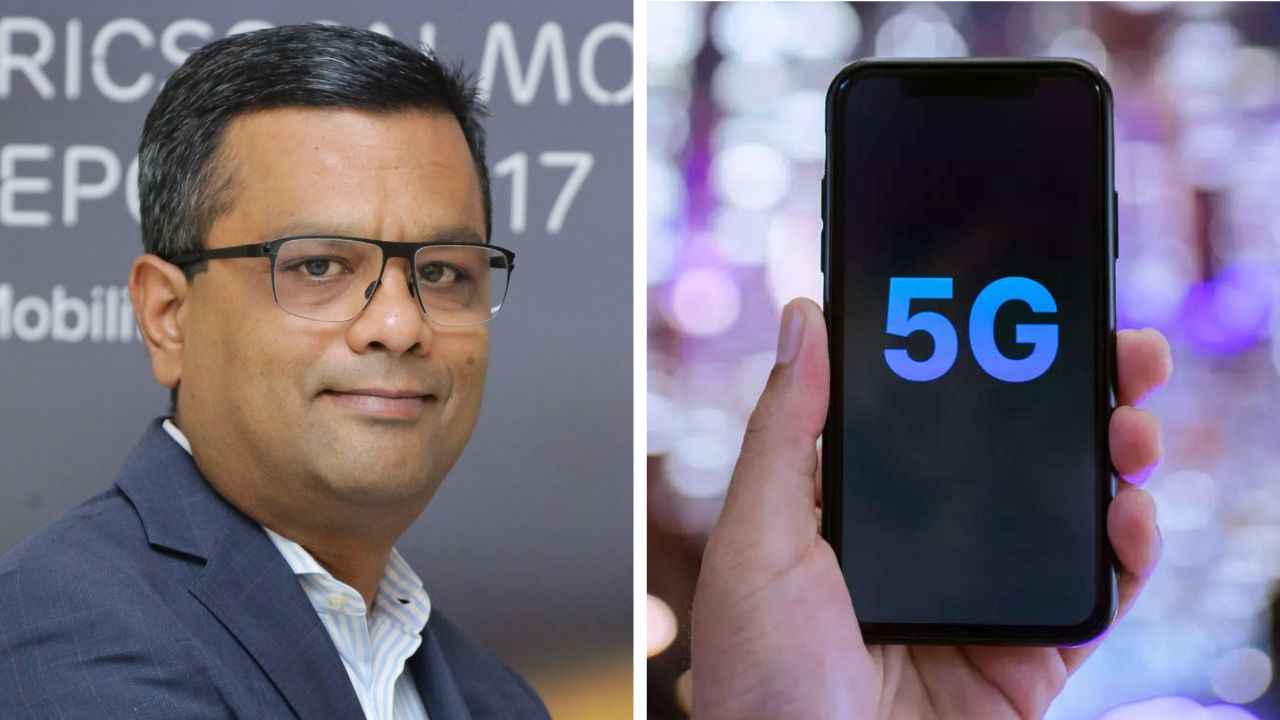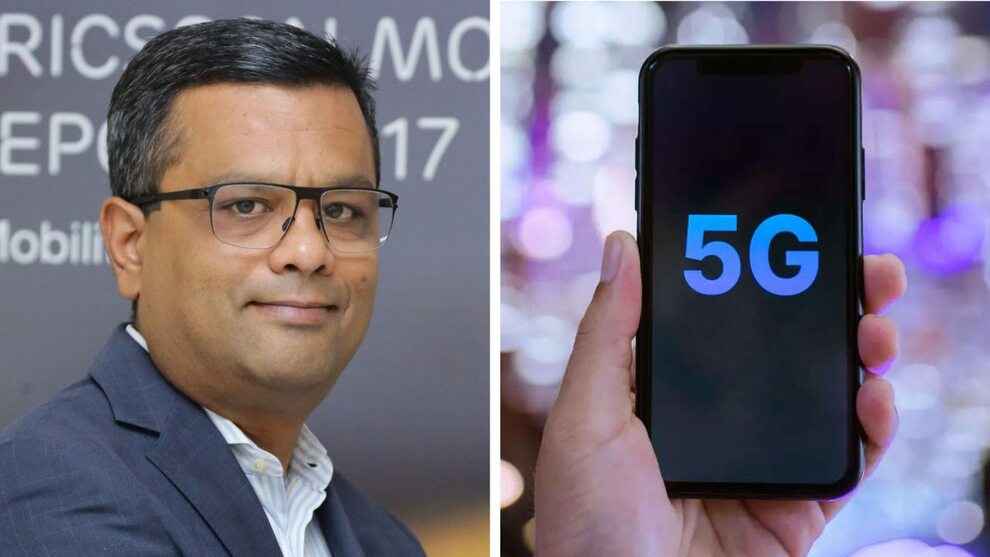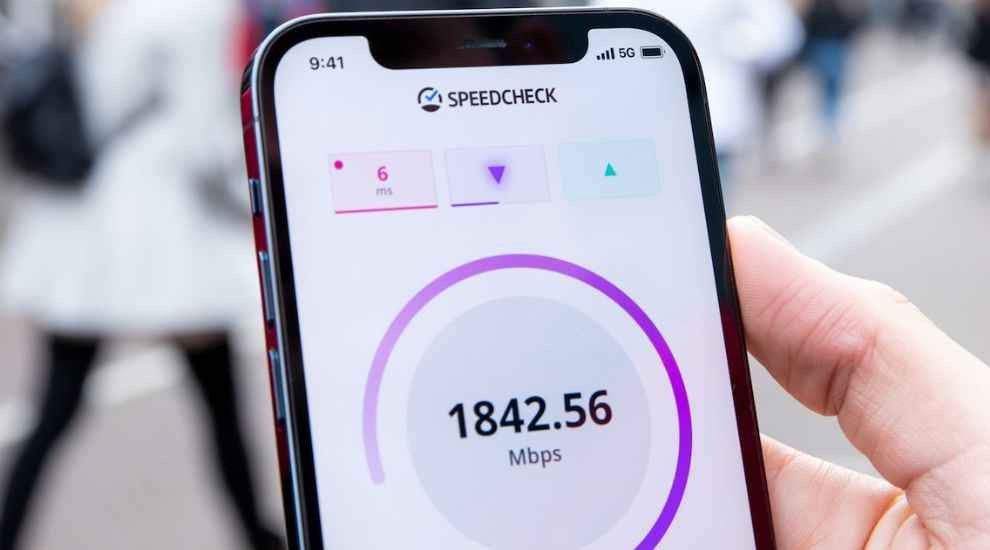India’s 5G future: Gaming, metaverse use will grow says Ericsson India MD

With PM Modi officially launching 5G in India in October 2022, Indian consumers seem all set to elevate their digital experience through 2023 and beyond. With 5G already live in many cities in India, and pan-India 5G coverage only set to grow in the near future, we spoke to Nitin Bansal, MD, Ericsson India and Head of Network Solutions, Southeast Asia, Oceania & India at Ericsson to understand how 5G deployment in India is going to empower users with new mobile experiences and increase the potential for new innovative applications. Edited excerpts follow:
 Survey
SurveyHow is 5G rollout in India tied to the 'Make in India' initiative? Any stats or figures to share?
The 5G rollout and ‘Make in India’ initiative are complementary to each other. By enabling industry 4.0, 5G will strengthen industrial capabilities of Indian businesses by making machines smarter, factories more efficient, and manufacturing processes faster. The ‘Make in India’ initiative augmented by PLI schemes set the stage for 5G deployment by delivering indigenous telecom equipment and creating a robust domestic value chain within the country. It is worth highlighting that in 1994 Ericsson became the first telecom equipment company to start its manufacturing in India.
Also Read: How will 5G India launch impact the lives of Indians?
Indian communication service providers or CSPs are rapidly building a robust 5G infrastructure for their 5G deployments. As per the latest Ericsson Mobility Report, 5G subscriptions will reach around 690 million by the end of 2028. Further, 5G will represent around 53 percent of mobile subscriptions at the end of 2028.
How is the Indian telecom sector going to evolve on the back of 5G over the next few years?
Enhanced mobile broadband (eMBB) and fixed wireless access (FWA) are expected to be the early use-cases of 5G in India. These will help address the concern of the limited fixed broadband penetration levels in India and improve the data experience while on the move. According to the Ericsson Mobility Report, FWA is forecast to grow at 19 percent year-on-year through 2022-28, and top 300 million connections by the end of 2028.
Over time with 5G, we expect more enterprise-related use cases to come up in sectors like manufacturing, healthcare, education, etc. In fact, as per Ericsson’s report – 5G for business: a 2030 market compass study – the projected value of the 5G-enabled digitalisation revenues in India will be approximately US $17 billion by 2030.
How do you see 5G enabling immersive user experiences in the cloud gaming space?
According to the Ericsson Consumer Lab, cloud gaming is amongst the top 10 services that Indian consumers are looking forward to in their 5G plans. Globally, 5G ready users are already spending more time on multiplayer mobile gaming, spending 1 hour more per week on multiplayer online games as compared to 4G users.
Also Read: Jio 5G is now available in 11 more cities: List of Jio True 5G supported cities announced
With a large youth population and increased smartphone penetration, India’s cloud gaming ecosystem is expected to grow rapidly. Latency remains a big challenge especially in the cloud-gaming segment which impacts the gaming experience and discourages gaming companies to add ultra-high-definition graphics. Games are being developed with HD graphics for enabling an enriching and engaging viewing experience. The flavour of cloud-based gaming or live gaming have brought the significance of low latency to the forefront.
The unique characteristics of 5G, like high throughput and ultra-low latency, will enable an immersive mobile gaming experience in India. Alongside cloud and mobile edge computing, gamers will finally be able to experience seamless Virtual Reality (VR), Augmented Reality (AR) and Extended Reality (XR) capabilities that are free from lag and cables.
How will 5G enhance video consumption, augmented reality (AR) and Metaverse experiences in India?
In this era of binge-watching, video consumption is the most significant traffic type generated by smartphone users. Approximately 7 in 10 of current smartphone users are looking forward to enhanced video streaming quality once they switch to 5G, and 360-degree live video streaming is amongst the top 10 services that Indian consumers wish for on their 5G plans.
Applications of augmented reality make the customer experience more efficient and comfortable. AR technology allows people to virtually model and try on items such as: clothing, houses, jewellery, makeup, cars, and furniture. So, we see more applications in Gaming, e-commerce and retail, interior design Eg consumers can visualize to see how the furniture /colour of the furniture items better fit their home layout etc. Likewise, AR lets potential buyers visualize properties by turning 2D blueprints into interactive 3D visualizations. These and more applications can be brought alive for Indian consumers at scale with 5G.
Coming to the metaverse, the definition itself is constantly evolving. Many elements of the metaverse have been around for years but depending on the definition of what the metaverse is, or could be, the virtual worlds and immersive experiences that exist today represent a starting point for the metaverse.
According to a recent Ericsson ConsumerLab report, 5G users on average spend 1 hour more per week in metaverse-related services than 4G users. We also expect two hours of more video content to be consumed weekly on mobile devices, 1.5 hours of which will be on AR/VR glasses by 2025.
You see, 5G has already emerged as an important enabler for early adopters to embrace metaverse-related services, such as socializing, playing and buying digital items in interactive 3D virtual gaming platforms.
What will happen to older network technologies like 4G / 3G / 2G in the future?
While 2G and 3G has been on a decline over the last few years, we expect 4G subscriptions to peak in 2024 at around 930 million and thereafter decline to an estimated 570 million by the year 2028. During the same timeline, as I mentioned earlier, 5G will be representing 53 percent of all mobile subscriptions in India.
All responses attributed to Nitin Bansal, MD, Ericsson India and Head of Network Solutions, Southeast Asia, Oceania & India at Ericsson
Jayesh Shinde
Executive Editor at Digit. Technology journalist since Jan 2008, with stints at Indiatimes.com and PCWorld.in. Enthusiastic dad, reluctant traveler, weekend gamer, LOTR nerd, pseudo bon vivant. View Full Profile

